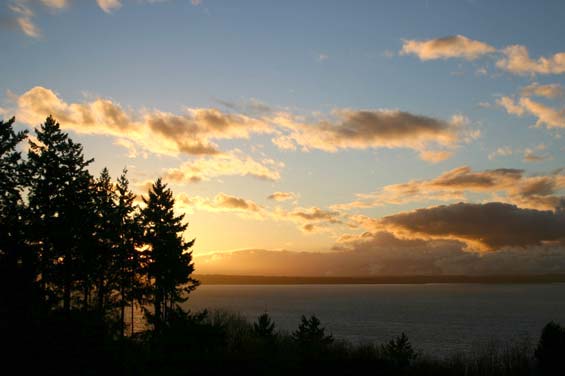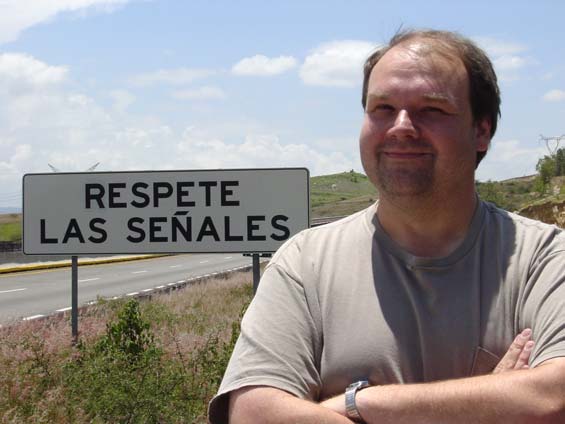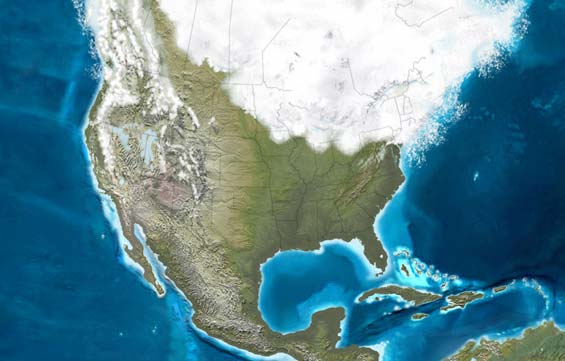Musings

Sometimes I think the high energy of the spring-time season initiates periods of lassitude. That was me today. Still, I managed to encounter this, by Daniel Bell, that I excerpted from his experiences teaching political theory in China:
Then the student from the party school raised questions about sovereignty. He noted the Chinese view that human rights should not have priority over sovereignty. I replied that human rights—or at least, the functional equivalent of human rights, whatever we want to call it—is what gives the point to sovereignty. Sovereignty only has moral value because it serves (usually) to protect the fundamental human rights of people in the state, and it loses its value once the state infringes upon, or fails to protect, those rights. I asked the student whether I, as a leader of a sovereign state, could kill millions of my people, then be justified in telling you not to intervene because you’d be trampling on my sovereignty. He agreed that I could not do so. I then asked him what moral value sovereignty could have if not its contribution to securing the fundamental rights of people in the state. He seemed genuinely puzzled, and then repeated out loud, to the whole class, “Mmm, what you’re saying is very different from what we’ve learned.�?
As a result of this discussion, he assigns the students a debate about whether you would advise your country’s leader to intervene in a genocide situation in a neighboring country that isn’t supported by the UN.
In the debate, the students raised an interesting argument not covered in the reading: namely, that most soldiers sign up to defend national interests, and it would be hard to justify putting their lives at risk in another country if the intervention does not benefit their own country in any way (in other words, the convergence of national and humanitarian interests makes the moral case for humanitarian intervention stronger, not weaker).
Now, Bell doesn’t link this idea to what our current administration has done, so we must (wearing our critical thinking hat suggested by yesterday’s entry)…indeed, how can we justify continuing to send our soldiers to the Middle East to face IEDs in wars (yes, there’s more than one; remember Afghanistan?) we cannot win. Indeed, is there a winnable war in today’s world? I’m not a diligent student of world current events, but I seem to hear about many unresolved conflicts (including ones the US does not have soldiers participating in) and no wars that have been won/lost.
Posted at 5:49 PM |
Comments Off on Spring lassitude

It seems to me that the God-community has gotten themselves into a corner of their own making. They have trained their flocks well in believing what they hear. Now they hear the da Vinci Code ideas and the flocks have little in the way of critical thinking skills, so are confused or think they’ve encountered a little enlightenment, and, whooo-hoo, your basic christian leader has a wee thought-rebellion on his/her hands.
And it’s all their own darned fault, since they fostered a culture supporting an absence of and abhorrence of critical thinking.
Indeed, is this also a major problem with many public schools, too? The lack of emphasis on critical thinking?
Posted at 10:22 PM |
Comments Off on Re-coding

Excellent news late today: word is my bro and his climbing buddy got out, and were to fly back to Seattle tonight.
Out, as in (as I understand it), choppered off the flank of Mt. Baker, having gotten trapped there days ago by bad weather.
Any bets on how long it is before he heads way up above the snowline again? My money’s on less than six months….
Posted at 9:23 PM |
Comments Off on He’s out!

Much of today my mind has been split between thoughts of Mt. Baker, AK and highland Mesoamerica in the Early and Middle Formative.
Musing upon a gorgeous sunset (or sunrise, when on the East Coast!) is a partial antidote.
Posted at 10:22 PM |
Comments Off on Waiting day

Spring rains are quite special, progressing with soft, light precipitation. Newly leafed out plants almost murmur their pleasure at the cleansing and nourishment of nature’s libation.
Walking this morning, John and I got a major dose of spring rain, colorfully evident before we left on the weather radar, returning home dripping and ready for towels and a change of clothing.
Meanwhile, the house is redolent, as promised, with Chinese five-spice rubbed ribs slow-roasting in the oven.
Posted at 3:30 PM |
Comments Off on Spring rain

I don’t know butterflies, but this looks like a sulfur type (Colias spp.)
The other day Anne (29 April) posted a recipe for her favorite BBQ sauce, and I started salivating. That recipe is very similar to my old favorite sauce, but recently I revamped the sauce, and I’ve posted my new favorite BBQ sauce recipe in the Food Fun section. I love that sauce over country-style ribs, roasted in the oven!
I’ve also posted a short-ribs recipe that is a bit different, as the flavors are dominated by the complexity of Chinese five-spice powder. This makes a great company-sized feed, and is super with an ice-cold beer!
I admit that we have left-over tamales from Cinco de My-oh yesterday, so I won’t be making any BBQ today, but it’s on the to-do list for tomorrow!
Posted at 10:54 AM |
Comments Off on BBQ love

John with one of his favorite Mexican signs: respect the signs!
Today’s Cinco de Mayo (meaning May not mayonnaise!)! So, celebrate!
I’m off to make some guacamole and frijoles to have with the tamales John scored out in the ’burbs. Kudos to John!
Posted at 4:48 PM |
Comments Off on Cinco de Mayo

Last glaciation in North America borrowed from this site. Isn’t it gorgeous?
Plotting continental divides on a map can produce some interesting patterns. Here’s a web page John pointed me to that considers the Gulf/Atlantic divide and the drainage divides across Georgia. Note the many parallel linear drainages across the piedmont and coastal plain, I’m guessing because of the longevity of this pattern.
If you’re in the mood to wander the web, you might also be interested in this blog that looks at GIS, geospatial technology, and, okay, I admit it, their intersection with archaeology. The blogger, Matt, posted a link to this nifty site with images constructed of the last 550 million years of North America’s surface geography, like the one above. This is roughly the period when humans arrived in North America, and we’re hip deep in arguments about whether they took sea routes or arrived via a proposed ice-free corridor along the Rockies. Of course, some recent publications have argued for a Pacific Coastal route that was less blocked by ice than shown here and there was no ice-free corridor. Stay tuned to the relevant journals, as this discussion will likely continue over innumerable beers. However, if another golden oldies bunch is right, a wave of hardy vagrants, whose descendents may or may not survived to meet later waves of immigrants, arrived 50,000 to 70,000 years ago, and that would have been earlier than this image.
Posted at 4:35 PM |
Comments Off on Web maps

Patrick F. McManus, if you don’t know him, pens humorous tales. I’m reading The Blight Way (2006), which is a Western.
The Blight County Sheriff’s Crime Scene Investigation Unit was hunched over his computer. Byron Proctor solved more crimes with his computer than did the rest of the department put together. Tully figured that hiring the kid had raised the average IQ of the department by at least ten points. Byron had short brown hair, most of which seemed engaged in an effort to stand straight up. He wore rimless glasses half an inch thick perched on an overly large nose. He had both the posture and complexion of a clam. (p. 4)
Doesn’t that sound like half the computer wizards you know?
Posted at 5:30 PM |
Comments Off on Clam posture

Perhaps the presence of this outlier pink petal can be described using Mahalanobis distance.
Aren’t you glad you don’t have a craving to eat stumps?
Modern humans may consume too much sodium, but modern gorillas often find it hard to get enough. Tropical soils tend to be deficient in the mineral and, as a result, these and other forest-dwelling primates don’t get much in the plants they eat.
So they supplement their diet in different ways. Lowland gorillas, for instance, are known to hang out in swampy areas in forest clearings where there are more sodium-rich plants. But mountain gorillas have been found to have a stranger source of sodium: rotting wood.
In addition to their regular diet of leaves, stems, bark and fruits, mountain gorillas for years have been observed to eat decayed stumps and logs. Other primates, including chimpanzees and mountain monkeys, are known to eat them, too.
Rotting wood doesn’t have much protein or sugar, so the behavior puzzled. Jessica M. Rothman and her colleagues at Cornell University set out to see if there was a nutritional reason for it. They studied mountain gorillas in the Bwindi Impenetrable National Park in Uganda.
As reported last week in the journal Biology Letters, the researchers found that the gorillas ate decayed wood at least once a month. The pieces eaten contained much higher amounts of sodium than the usual components of their diet, and logs and parts of stumps that the gorillas avoided had far less sodium than those that were consumed.
This from the NY Times.
Also, doncha just love two and three sentence paragraphs ad infinitum?
Today’s vocabulary: Mahalanobis distance. This is a statistical means of comparing an unknown sample with an known dataset to see how similar they are, a kind of multivariate analysis, at least as I understand it. That link is NOT a Wikipedia entry, ’cause the Wiki-freaks have composed an entry is all formulae and not helpful for me, or, I’m guessing, you! BTW, I encountered this stat in a series of articles that comprise a spat about Early Formative Mesoamerican pottery sourcing chemical analyses. So, unanswerable question: how many of those co-authors knew/know what Mahalanobis distance is and how to use it appropriately!
Posted at 5:48 PM |
Comments Off on Stump appetizer









